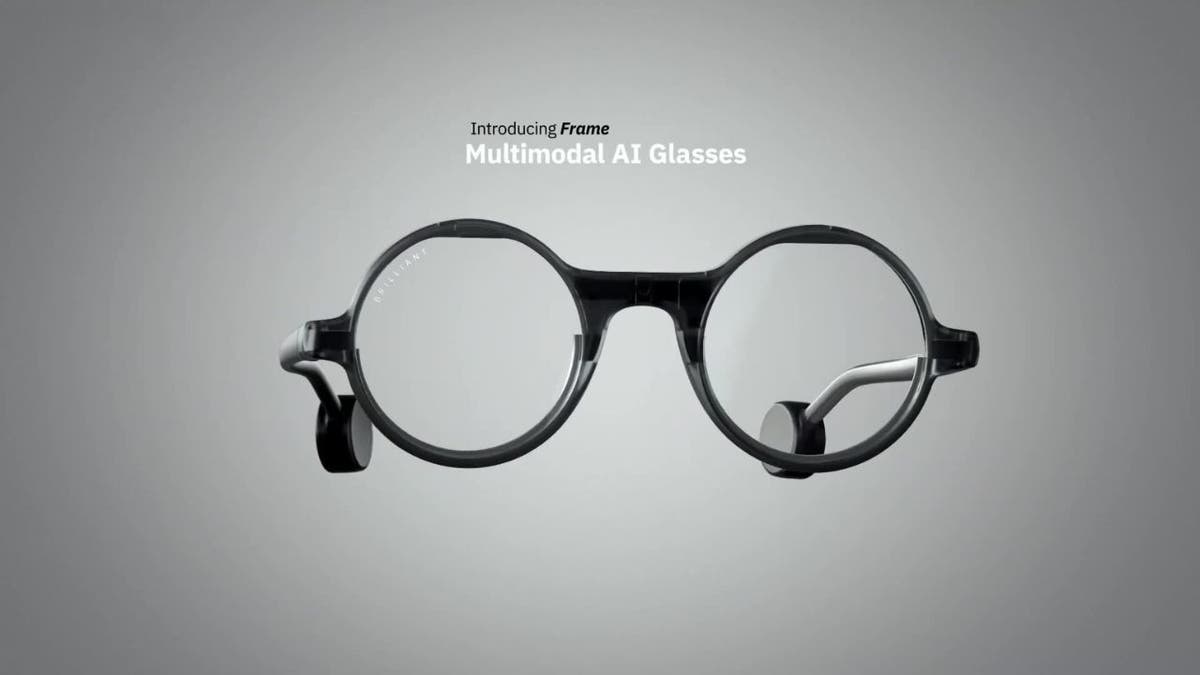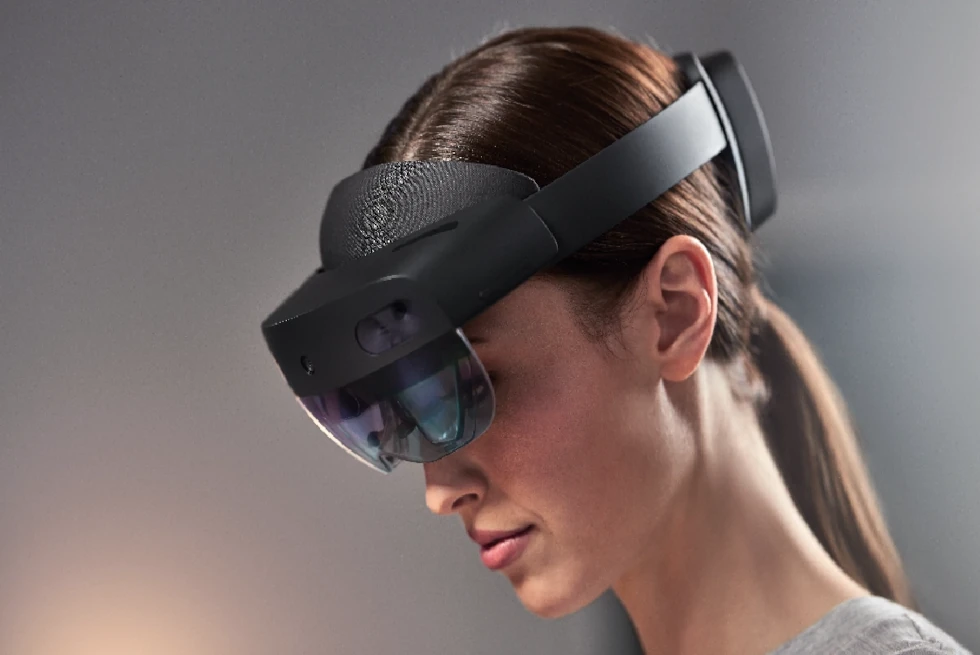
Electronics#ar #VR #AR Glasses #Augmented Reality #Virtual Reality #techtok #cftech
Use this section to provide a description of your blog./pages/blog
Experience the future with AR glasses unveiled at the CES show in 2025!
Posted by Technology Co., Ltd Shenzhen Mshilor
Several exciting AR glasses advancements were showcased at the CES 2025 show. Here are some highlights:
1. Microsoft HoloLens 3
- Features: Improved optics and a wider field of view, enhanced spatial mapping, and better integration with cloud services for real-time collaboration.
- Target Audience: Primarily aimed at enterprise users in fields like healthcare and manufacturing.
2. Nreal Air
- Features: Lighter design with upgraded display technology for better brightness and clarity. Focused on entertainment and gaming.
- Target Audience: Consumers looking for immersive AR experiences that connect to smartphones.
3. Snap Spectacles 4
:format(webp)/cdn.vox-cdn.com/uploads/chorus_asset/file/25619621/247271_Spectacles_2024_NHernandez_Melo_0015.jpg)
- Features: Enhanced AR capabilities with a wider field of view and improved camera quality for content creation.
- Target Audience: Social media enthusiasts and content creators.
4. Vuzix Blade 2

- Features: Updated design with improved battery life and augmented reality functionalities aimed at professional applications.
- Target Audience: Business and industrial use cases.
5. Apple Vision Pro (New Updates)
- Features: Updates to the existing model with improved performance, new software features, and integration with Apple’s ecosystem for seamless use across devices.
- Target Audience: Consumers and professionals looking for high-end AR experiences.
Key Trends
- Lightweight Design: Many manufacturers focus on reducing the weight of AR glasses to ensure comfort during extended use.
- Enhanced Battery Life: Improvements in battery technology were a common theme, allowing for longer usage times.
- Integration with AI: Many models incorporated AI for better object recognition and user interaction.
Conclusion
CES 2025 highlighted significant advancements in AR glasses, emphasizing comfort, functionality, and integration with existing technologies. As these devices evolve, they promise to offer even more immersive and practical experiences for consumers and professionals.
Read more
Several exciting AR glasses advancements were showcased at the CES 2025 show. Here are some highlights:
1. Microsoft HoloLens 3
- Features: Improved optics and a wider field of view, enhanced spatial mapping, and better integration with cloud services for real-time collaboration.
- Target Audience: Primarily aimed at enterprise users in fields like healthcare and manufacturing.
2. Nreal Air
- Features: Lighter design with upgraded display technology for better brightness and clarity. Focused on entertainment and gaming.
- Target Audience: Consumers looking for immersive AR experiences that connect to smartphones.
3. Snap Spectacles 4
:format(webp)/cdn.vox-cdn.com/uploads/chorus_asset/file/25619621/247271_Spectacles_2024_NHernandez_Melo_0015.jpg)
- Features: Enhanced AR capabilities with a wider field of view and improved camera quality for content creation.
- Target Audience: Social media enthusiasts and content creators.
4. Vuzix Blade 2

- Features: Updated design with improved battery life and augmented reality functionalities aimed at professional applications.
- Target Audience: Business and industrial use cases.
5. Apple Vision Pro (New Updates)
- Features: Updates to the existing model with improved performance, new software features, and integration with Apple’s ecosystem for seamless use across devices.
- Target Audience: Consumers and professionals looking for high-end AR experiences.
Key Trends
- Lightweight Design: Many manufacturers focus on reducing the weight of AR glasses to ensure comfort during extended use.
- Enhanced Battery Life: Improvements in battery technology were a common theme, allowing for longer usage times.
- Integration with AI: Many models incorporated AI for better object recognition and user interaction.
Conclusion
CES 2025 highlighted significant advancements in AR glasses, emphasizing comfort, functionality, and integration with existing technologies. As these devices evolve, they promise to offer even more immersive and practical experiences for consumers and professionals.
Read more
How much do external battery packs for these glasses cost?
Posted by Technology Co., Ltd Shenzhen Mshilor
The cost of external battery packs for AI glasses can vary based on the brand, capacity, and features. Here's a general overview of the pricing for external battery packs compatible with some popular AI glasses:
/cdn.vox-cdn.com/uploads/chorus_asset/file/25012284/236834_Ray_Ban_Meta_Smart_Glasses_AKrales_0648.jpg)
1. Vuzix Blade
- External Battery Pack Cost: Typically ranges from $50 to $100 depending on the brand and capacity.
2. Epson Moverio BT-300/350
- External Battery Pack Cost: Generally priced around $30 to $70, depending on capacity and vendor.
3. Rokid Glass
- External Battery Pack Cost: Usually between $40 and $80, depending on the specifications and capacity.
4. Nreal Light
- External Battery Pack Cost: Generally costs about $30 to $60 for compatible power packs.
Considerations
- Capacity: Higher-capacity battery packs will typically cost more but provide extended usage time.
- Compatibility: Ensure that the battery pack is compatible with the specific model of glasses, as not all packs may fit every model.
- Brand: Prices can vary based on the manufacturer, with branded products often being more expensive than third-party options.
Conclusion
External battery packs for AI glasses typically range from $30 to $100. Users should consider their usage needs, compatibility, and the total capacity when selecting an external battery pack.
Read more
The cost of external battery packs for AI glasses can vary based on the brand, capacity, and features. Here's a general overview of the pricing for external battery packs compatible with some popular AI glasses:
/cdn.vox-cdn.com/uploads/chorus_asset/file/25012284/236834_Ray_Ban_Meta_Smart_Glasses_AKrales_0648.jpg)
1. Vuzix Blade
- External Battery Pack Cost: Typically ranges from $50 to $100 depending on the brand and capacity.
2. Epson Moverio BT-300/350
- External Battery Pack Cost: Generally priced around $30 to $70, depending on capacity and vendor.
3. Rokid Glass
- External Battery Pack Cost: Usually between $40 and $80, depending on the specifications and capacity.
4. Nreal Light
- External Battery Pack Cost: Generally costs about $30 to $60 for compatible power packs.
Considerations
- Capacity: Higher-capacity battery packs will typically cost more but provide extended usage time.
- Compatibility: Ensure that the battery pack is compatible with the specific model of glasses, as not all packs may fit every model.
- Brand: Prices can vary based on the manufacturer, with branded products often being more expensive than third-party options.
Conclusion
External battery packs for AI glasses typically range from $30 to $100. Users should consider their usage needs, compatibility, and the total capacity when selecting an external battery pack.
Read more
Are there any AI glasses with replaceable batteries?
Posted by Technology Co., Ltd Shenzhen Mshilor
As of 2025, there are limited options for AI glasses that feature replaceable batteries, as most designs prioritize compactness and sleekness, which often leads to non-removable battery designs. However, some companies have explored this feature:

1. Vuzix
- Model: Vuzix Blade
- Battery: While the Vuzix Blade has a rechargeable battery, there are options available for external battery packs that can extend usage time. The design leans towards enterprise use, where users may need to swap out batteries for longer durations.
2. Epson
- Model: Moverio BT-300/350
- Battery: These smart glasses use a rechargeable battery, and while they don't have a user-replaceable battery, they do offer external battery packs that can be connected for extended use.
3. Rokid
- Model: Rokid Glass
- Battery: Similar to Vuzix, Rokid Glass has options for external batteries, but the internal battery is not designed for user replacement.
4. Nreal
- Model: Nreal Light
- Battery: The Nreal Light glasses connect to a portable battery pack that can be swapped out, providing versatility for extended use.
Conclusion
While true replaceable batteries are rare in AI glasses due to design considerations, some models allow for external battery packs or alternative solutions to extend usage time. As the market grows, we may see more innovations in this area, catering to user demands for longer battery life and flexibility.
Read more
As of 2025, there are limited options for AI glasses that feature replaceable batteries, as most designs prioritize compactness and sleekness, which often leads to non-removable battery designs. However, some companies have explored this feature:

1. Vuzix
- Model: Vuzix Blade
- Battery: While the Vuzix Blade has a rechargeable battery, there are options available for external battery packs that can extend usage time. The design leans towards enterprise use, where users may need to swap out batteries for longer durations.
2. Epson
- Model: Moverio BT-300/350
- Battery: These smart glasses use a rechargeable battery, and while they don't have a user-replaceable battery, they do offer external battery packs that can be connected for extended use.
3. Rokid
- Model: Rokid Glass
- Battery: Similar to Vuzix, Rokid Glass has options for external batteries, but the internal battery is not designed for user replacement.
4. Nreal
- Model: Nreal Light
- Battery: The Nreal Light glasses connect to a portable battery pack that can be swapped out, providing versatility for extended use.
Conclusion
While true replaceable batteries are rare in AI glasses due to design considerations, some models allow for external battery packs or alternative solutions to extend usage time. As the market grows, we may see more innovations in this area, catering to user demands for longer battery life and flexibility.
Read more
AI Glasses in 2025: Overview and Predictions
Posted by Technology Co., Ltd Shenzhen Mshilor
AI Glasses in 2025: Overview and Predictions
As we look ahead to 2025, the development of AI glasses is expected to transform the way we interact with technology, providing enhanced experiences in various domains such as communication, navigation, and augmented reality. Here are some key trends and predictions for AI glasses in 2025:

1. Enhanced Augmented Reality Capabilities
- Seamless Integration: AI glasses are likely to feature advanced AR capabilities that overlay digital information seamlessly onto the real world, improving user interaction with their environment.
- Real-Time Data Processing: Enhanced AI algorithms will enable real-time processing of visual data, allowing users to receive instant information about their surroundings, such as identifying landmarks, products, or even people.
2. Improved User Interfaces
- Voice and Gesture Control: AI glasses will likely incorporate sophisticated voice recognition and gesture control, making interactions more intuitive. Users can command the device or navigate menus without physical input.
- Personalized Experiences: Machine learning algorithms will enable glasses to learn user preferences and habits, offering tailored content and notifications.
3. Advanced Vision and Object Recognition
- Enhanced Object Recognition: AI-driven image recognition will allow glasses to identify objects, faces, and text in real-time, providing contextual information or translations on demand.
- Navigational Assistance: AI glasses may provide visual navigation cues, guiding users through unfamiliar environments with overlays of directional arrows or highlights on pathways.
4. Health and Fitness Monitoring
- Health Metrics Tracking: Built-in sensors could monitor health metrics such as heart rate, temperature, and activity levels, providing insights directly through the display.
- Augmented Workouts: AI glasses may offer augmented reality workouts, providing users with real-time feedback on form and performance during exercise.
5. Connectivity and Integration
- IoT Integration: AI glasses will likely connect with a wide range of Internet of Things (IoT) devices, allowing users to control smart home devices, appliances, and wearables through their eyewear.
- Cloud-Based AI Services: Enhanced cloud connectivity will enable AI glasses to leverage powerful processing capabilities and data storage, improving functionality without straining local resources.
6. Privacy and Security Features
- Privacy Controls: As AI glasses gather more data, manufacturers will need to implement robust privacy features, allowing users to control what data is collected and how it is used.
- Secure Authentication: Biometric authentication methods, such as facial recognition or iris scanning, may be employed to enhance security.
7. Sleeker Designs and Improved Comfort
- Lightweight and Stylish: Advances in materials and miniaturization will lead to sleeker, lighter designs that resemble regular eyewear, making them more appealing for everyday use.
- Battery Life Improvements: Innovations in battery technology will likely extend usage time, allowing for all-day wear without frequent recharging.
Conclusion
By 2025, AI glasses are expected to offer a blend of augmented reality, advanced AI capabilities, and seamless connectivity, fundamentally changing how we interact with information and our environment. As technology progresses, issues such as privacy, security, and user comfort will also need to be addressed to ensure widespread adoption and user trust. The future of AI glasses promises to be an exciting convergence of technology and daily life.
Read more
AI Glasses in 2025: Overview and Predictions
As we look ahead to 2025, the development of AI glasses is expected to transform the way we interact with technology, providing enhanced experiences in various domains such as communication, navigation, and augmented reality. Here are some key trends and predictions for AI glasses in 2025:

1. Enhanced Augmented Reality Capabilities
- Seamless Integration: AI glasses are likely to feature advanced AR capabilities that overlay digital information seamlessly onto the real world, improving user interaction with their environment.
- Real-Time Data Processing: Enhanced AI algorithms will enable real-time processing of visual data, allowing users to receive instant information about their surroundings, such as identifying landmarks, products, or even people.
2. Improved User Interfaces
- Voice and Gesture Control: AI glasses will likely incorporate sophisticated voice recognition and gesture control, making interactions more intuitive. Users can command the device or navigate menus without physical input.
- Personalized Experiences: Machine learning algorithms will enable glasses to learn user preferences and habits, offering tailored content and notifications.
3. Advanced Vision and Object Recognition
- Enhanced Object Recognition: AI-driven image recognition will allow glasses to identify objects, faces, and text in real-time, providing contextual information or translations on demand.
- Navigational Assistance: AI glasses may provide visual navigation cues, guiding users through unfamiliar environments with overlays of directional arrows or highlights on pathways.
4. Health and Fitness Monitoring
- Health Metrics Tracking: Built-in sensors could monitor health metrics such as heart rate, temperature, and activity levels, providing insights directly through the display.
- Augmented Workouts: AI glasses may offer augmented reality workouts, providing users with real-time feedback on form and performance during exercise.
5. Connectivity and Integration
- IoT Integration: AI glasses will likely connect with a wide range of Internet of Things (IoT) devices, allowing users to control smart home devices, appliances, and wearables through their eyewear.
- Cloud-Based AI Services: Enhanced cloud connectivity will enable AI glasses to leverage powerful processing capabilities and data storage, improving functionality without straining local resources.
6. Privacy and Security Features
- Privacy Controls: As AI glasses gather more data, manufacturers will need to implement robust privacy features, allowing users to control what data is collected and how it is used.
- Secure Authentication: Biometric authentication methods, such as facial recognition or iris scanning, may be employed to enhance security.
7. Sleeker Designs and Improved Comfort
- Lightweight and Stylish: Advances in materials and miniaturization will lead to sleeker, lighter designs that resemble regular eyewear, making them more appealing for everyday use.
- Battery Life Improvements: Innovations in battery technology will likely extend usage time, allowing for all-day wear without frequent recharging.
Conclusion
By 2025, AI glasses are expected to offer a blend of augmented reality, advanced AI capabilities, and seamless connectivity, fundamentally changing how we interact with information and our environment. As technology progresses, issues such as privacy, security, and user comfort will also need to be addressed to ensure widespread adoption and user trust. The future of AI glasses promises to be an exciting convergence of technology and daily life.


